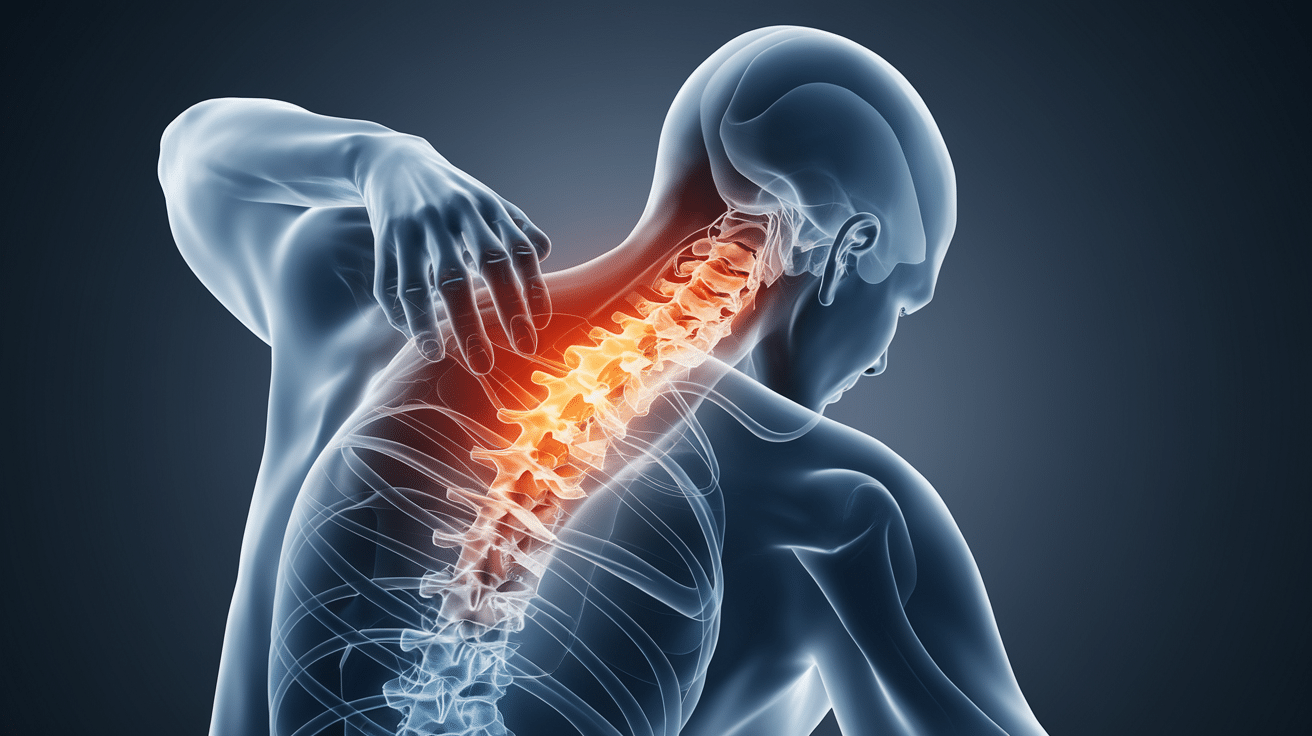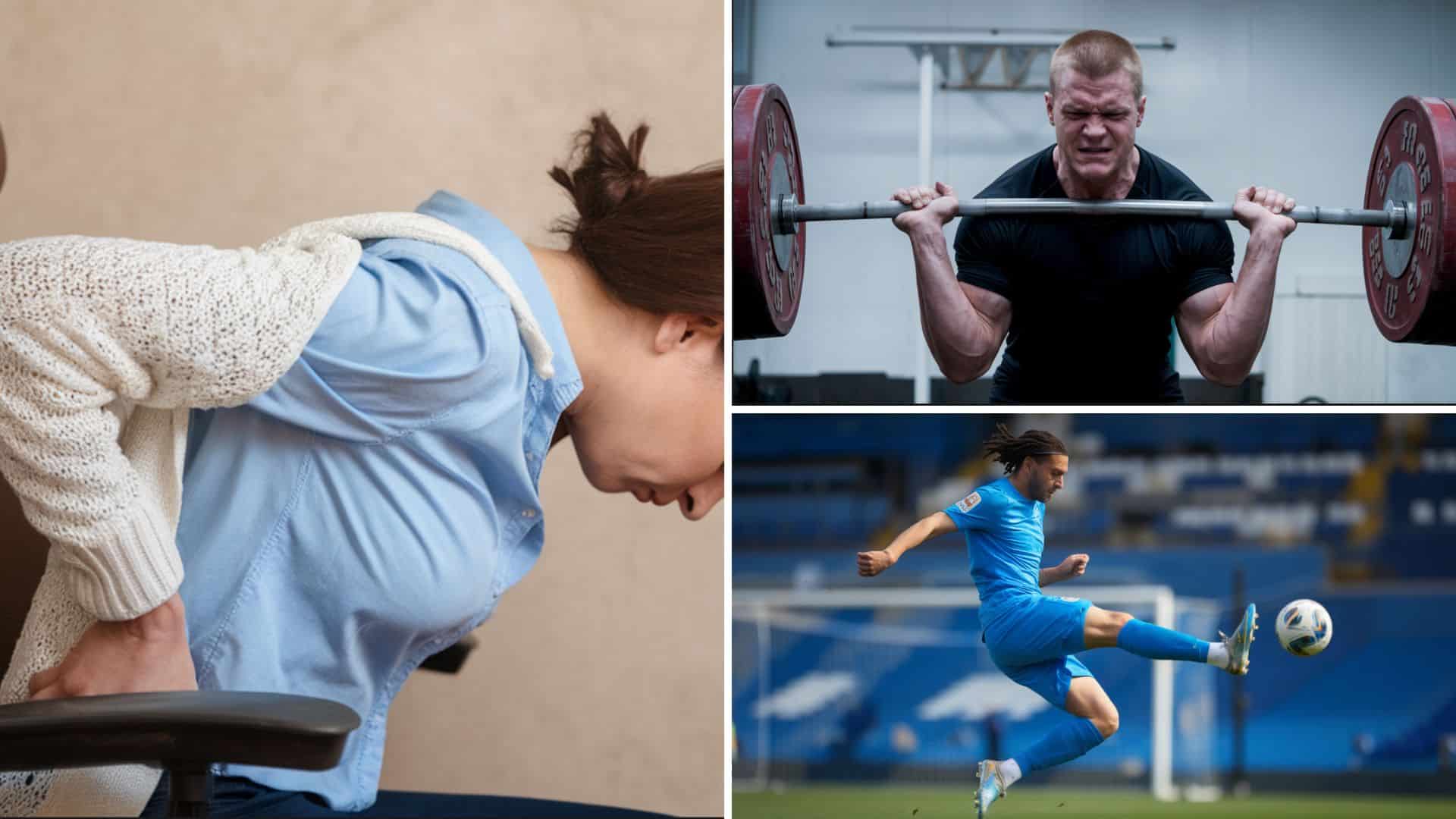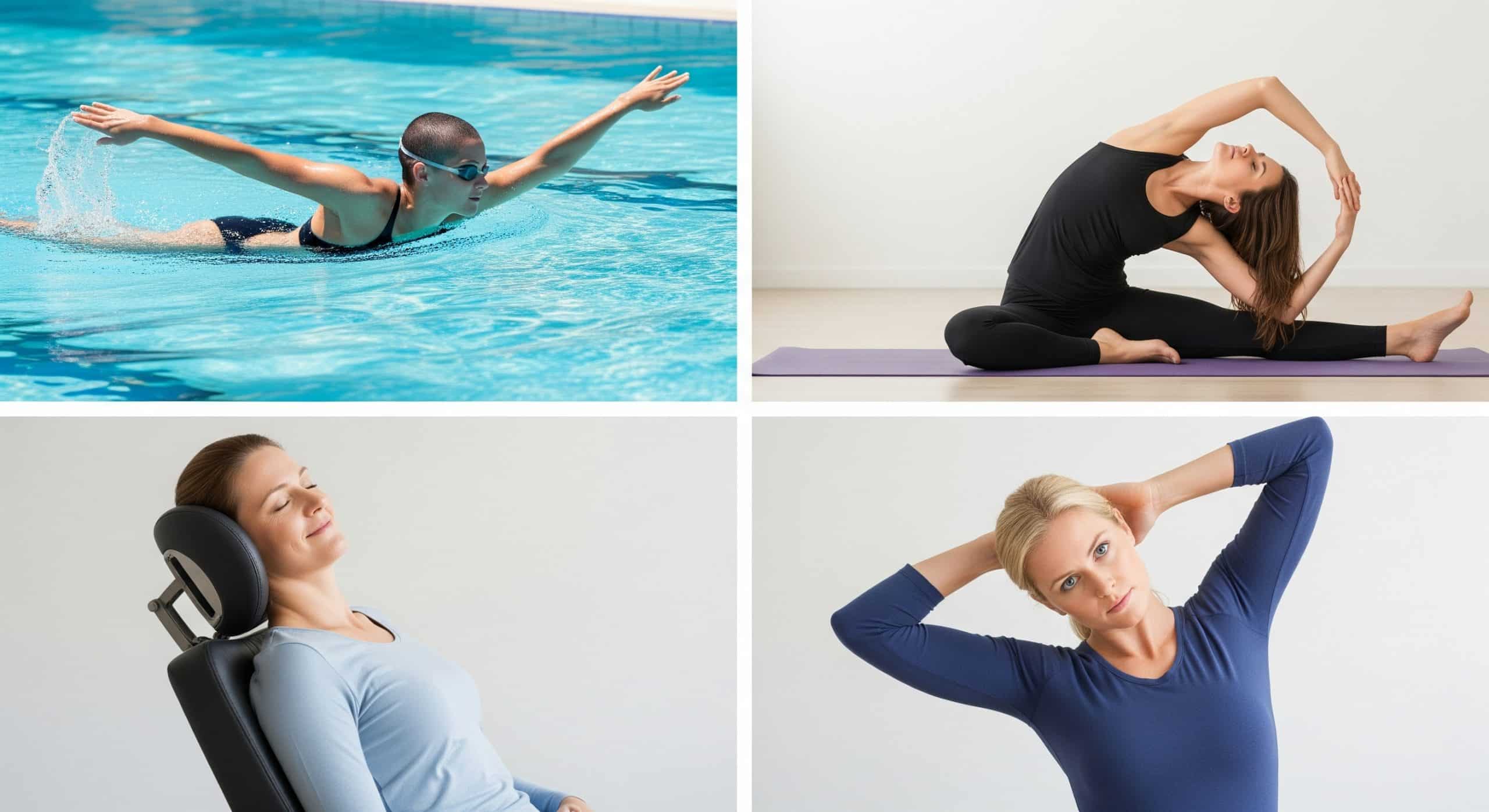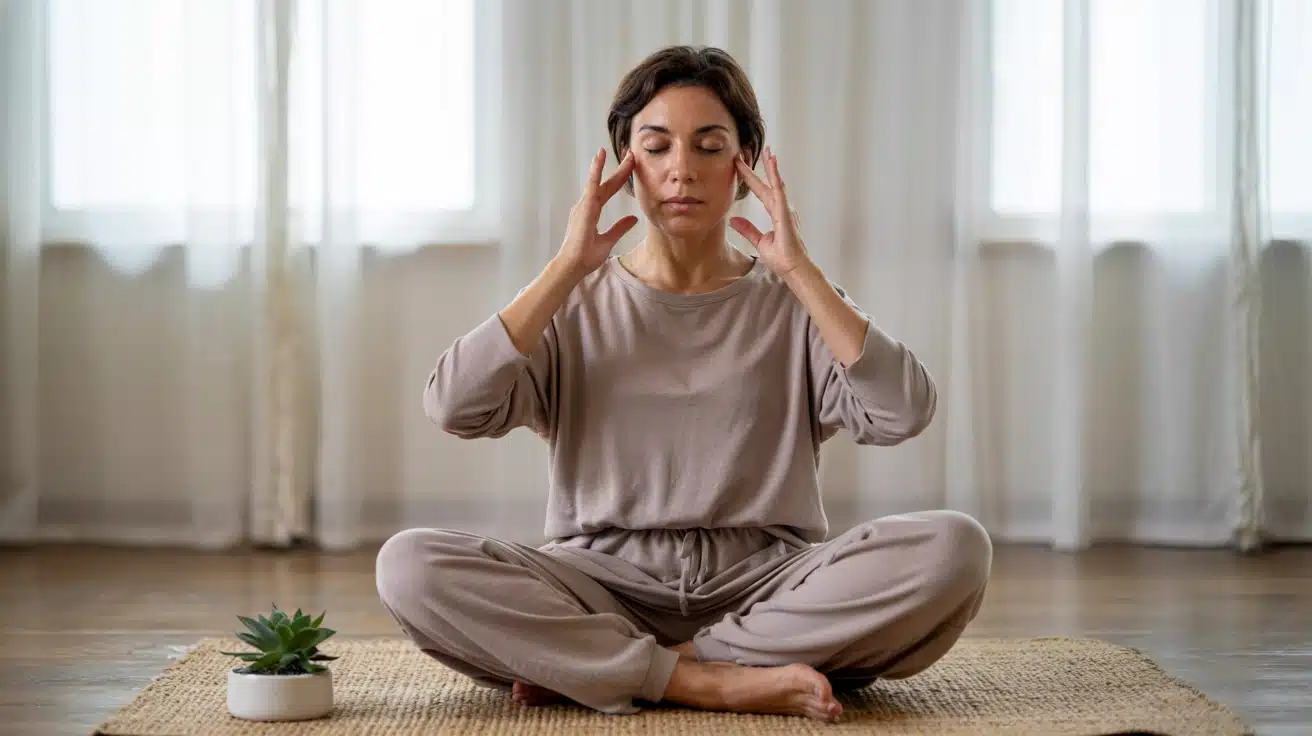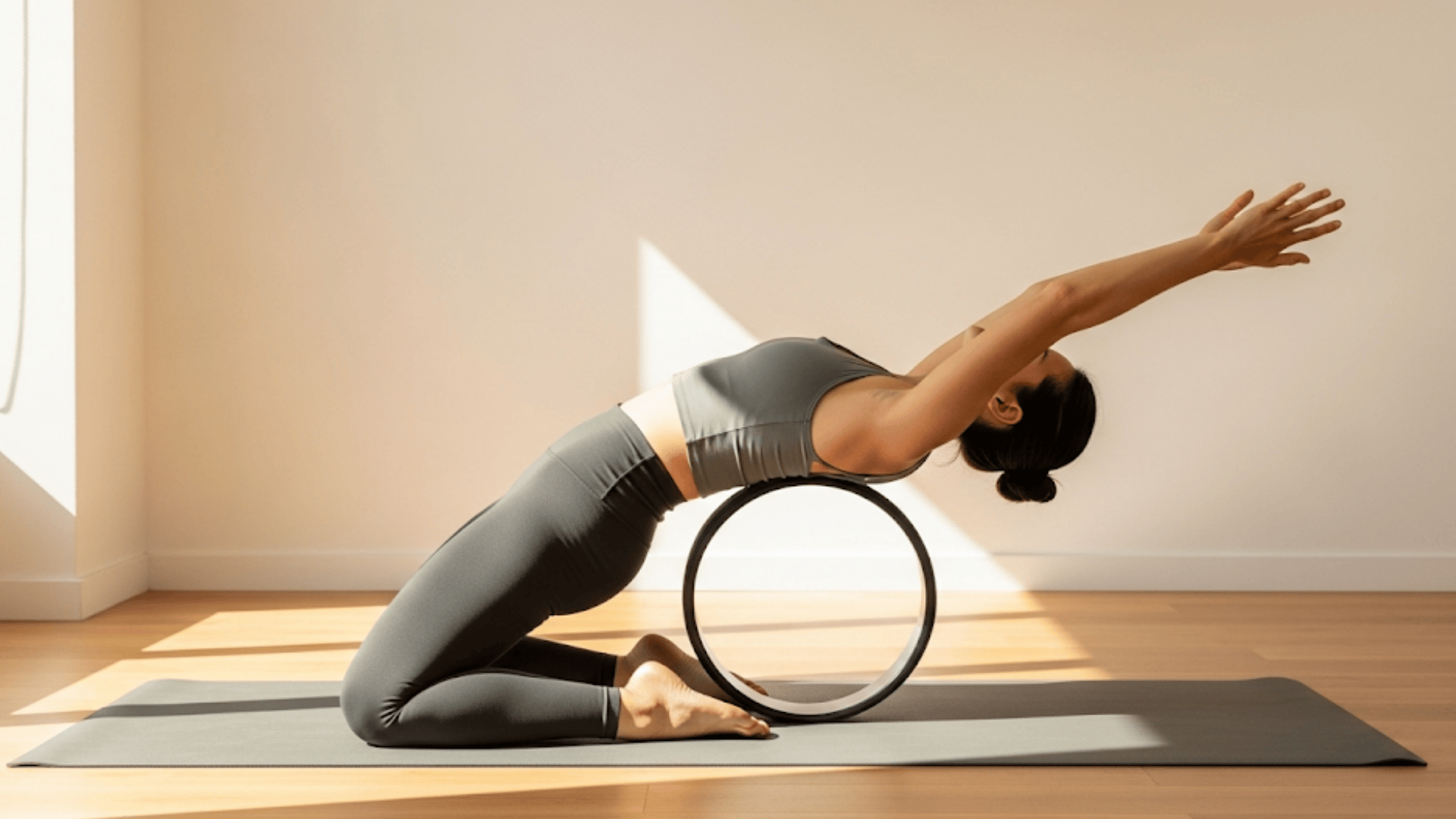If you’re experiencing neck pain, numbness in your arms, or difficulty with daily activities, you might be dealing with cervical spinal stenosis.
This condition affects millions of people, especially those over 50, when the spinal canal in the neck becomes narrow, putting pressure on vital nerves.
The good news? You’re not powerless against this condition. While cervical spinal stenosis can significantly impact your quality of life, understanding what triggers your symptoms and knowing which activities to avoid can make a world of difference in managing your pain.
In this blog, we’ll walk you through everything you need to know about cervical spinal stenosis – from recognizing the early symptoms to finding effective at-home relief strategies. Ready to take control of your neck health and get back to living comfortably?
Want to sidestep the everyday moves that crank up spinal pressure?
Check out my quick guide to the worst positions for a herniated disc—and learn how to spare your neck and back—right here: Herniated Disc: Worst Positions to Avoid.
What Is Cervical Spinal Stenosis?
Cervical spinal stenosis is a serious condition that happens when the spinal canal in the neck becomes narrow. The spinal canal is like a tunnel that runs through each of the spine’s bones. It protects the spinal cord and nerve roots that send signals to other parts of the body.
When this tunnel gets smaller, it puts pressure on the spinal cord and nerves. This pressure can cause pain and other problems that affect daily life.
The narrowing can happen for different reasons. Sometimes bones grow extra parts called bone spurs. Other times, discs between the spine bones can bulge or break down.
Key facts about cervical spinal stenosis:
- Age factor: Most people who get this condition are over 50 years old
- Progressive condition: It often gets worse over time without proper treatment
- Hidden problem: In mild cases, you might not know you have it because symptoms don’t always show up right away
As we get older, the parts of our spine naturally wear down, which is the most common cause of this condition.
Common Symptoms of Cervical Spinal Stenosis
The symptoms of cervical spinal stenosis don’t always show up the same way in every person. In mild cases, some people may not have any signs at all. You might not even know you have the condition until it gets worse.
However, when symptoms do appear, they happen because of pressure on your spinal nerves. This pressure can stop your nervous system from working correctly, which leads to various problems throughout your body.
The most common symptoms include:
- Neck pain – Often the first sign people notice
- Stiffness – Makes it hard to move your neck normally
- Numbness – You may lose feeling in your arms, hands, or fingers
- Tingling in extremities – Like pins and needles in your arms and hands
- Back pain – Can spread beyond just your neck area
- Leg pain – May seem unrelated, but comes from nerve pressure
- Difficulty walking and standing – Balance and coordination problems
- Weakness – In your arms, hands, or legs
Things to Avoid With Cervical Spinal Stenosis
When living with cervical spinal stenosis, certain activities and movements can significantly worsen your condition by increasing pressure on the spinal nerves and potentially causing permanent damage. Understanding what to avoid is crucial for managing symptoms and preventing the progression of this condition, which affects the narrowing of the spinal canal in the neck area.
1. High-Impact Sports and Activities
Running, basketball, rugby, football, martial arts, and jump rope can shock the spinal cord, leading to inflammation and increased pain. These activities create repetitive jolting impacts on compromised spinal structures, which can increase spinal compression and worsen stenosis symptoms. If you must participate in high-impact activities, avoid long distances and slowly work up to more intense activities to help your body adjust and prevent further injury.
2. Hyperextension Stretches
Spinal flexion and extension exercises can increase pressure on nerves and result in permanent damage, even though moderate stretching may help.
These stretches and poses involving hyperextension can worsen cervical stenosis by causing additional compression of the spinal canal. While some exercises may provide benefits, hyperextension movements should be avoided as they can lead to further narrowing and increased symptoms. Always consult with a healthcare professional before starting any stretching routine.
3. Heavy Lifting
Carrying heavy loads puts additional strain on the neck and can permanently damage the spine, especially when picking items up from the floor. Lifting heavy objects improperly can strain your neck and worsen symptoms.
The additional weight places excessive stress on the cervical spine, potentially leading to further compression and nerve damage. If you must move heavy objects, avoid picking them up from floor level and learn proper lifting techniques to minimize risk.
4. Sudden Movements
Jerky movements, sharp head turns, and quick twists can strain spinal ligaments and cause tears. These sudden, short, sharp movements can place significant strain on your spinal ligaments and potentially cause additional damage.
Unlike lumbar spinal stenosis, cervical stenosis can be worsened by abrupt head movements. Instead of making sharp head turns, try to move your whole body slowly and gently to minimize shock and stress on your neck and spine.
5. Prolonged Static Positions
Remaining in one position for extended periods, whether sitting, standing, or lying down, can strain the neck and increase inflammation. Extended periods of bed rest or maintaining the same position can lead to increased pressure on nerves and more pain.
When tissues become swollen from prolonged positioning, this creates additional compression on the spinal structures. Take regular breaks to walk around or change positions to give your body rest and prevent excessive strain.
6. Poor Posture
Slouching or improper posture places additional stress on the cervical spine, leading to increased compression and discomfort. Maintaining poor posture while sitting, standing, or during activities can exacerbate cervical spinal stenosis symptoms by placing unnecessary strain on the neck structures. Proper ergonomics and good posture are essential for spine health.
Focus on maintaining the natural curve of your neck and avoiding positions that place additional stress on the cervical spine throughout daily activities.
7. Pushing Through Pain
Ignoring pain and continuing activities will make the condition worse, as cervical spinal stenosis requires acknowledgment and proper management. Many people attribute minor neck pain to small strains and ignore symptoms while taking over-the-counter pain medications.
However, with spinal stenosis, this approach will worsen the condition over time. Cervical spinal stenosis is not a condition that improves without proper treatment. When you feel pain, stop the activity and acknowledge the symptoms to prevent further deterioration.
8. Repetitive Neck Movements
Activities involving excessive neck movements or looking up and down for extended periods can contribute to symptom flare-ups. Repetitive or excessive use of neck muscles and joints can contribute to inflammation and aggravated symptoms.
This includes activities like frequently looking down at smartphones, tablets, or other devices, which can strain the neck structures. Take regular breaks from repetitive activities and practice proper ergonomics, such as holding devices at eye level, to reduce stress on the cervical spine.
Note: This condition will not improve with time without treatment. If you feel pain, stop what you are doing. Listen to your body and avoid activities that make your symptoms worse.
What Triggers Cervical Stenosis?
Understanding what causes cervical spinal stenosis can help you take steps to prevent it from getting worse. The condition develops when your spinal canal gets narrower, putting pressure on your spinal cord and nerves.
The most common cause is arthritis, which is why cervical spinal stenosis typically develops in people over 50. Arthritis breaks down the cartilage in your spine. When this happens, your spinal cord can shift and narrow, creating problems.
Other causes of cervical spinal stenosis include:
- Slipped discs – When discs move out of their normal position
- Herniated discs – When the soft inner part of a disc pushes through its outer layer
- Injury – Trauma to your neck area can cause narrowing
- Scoliosis – Abnormal spine curvature can lead to stenosis
- Tumors – Growths can press on your spinal canal
- Genetic conditions – Some people are born with spine problems
Cervical Spinal Stenosis Relief Methods at Home
Managing cervical spinal stenosis at home doesn’t have to be complicated. Simple changes in daily routine can help reduce pain and improve the quality of life.
1. Try Water-Based Activities
Swimming and water exercises are perfect for cervical spinal stenosis relief.
The water supports your body weight and takes pressure off your joints. This makes movement easier and less painful while still giving you good exercise.
2. Focus on Gentle Strengthening
Yoga and pilates help with pain management and reduce swelling. These gentle exercises stretch and strengthen the muscles without putting too much stress on the neck. Core strengthening exercises like gentle ab work and lunges help support your spine better.
3. Use Proper Rest Techniques
Getting good rest is important, but don’t stay in one position too long. Extended bed rest can strain your neck and cause inflammation. Take regular breaks from sitting or lying down. Short walks or position changes help prevent stiffness.
4. Learn Safe Stretching Methods
Certain stretches can help relieve pressure on your nerves and may temporarily widen your spinal canal. Always speak to a doctor first before starting any stretching routine. They can guide you on which stretches help and which ones to avoid.
Know when to get help: Home treatments work well for mild cases, but severe symptoms need medical care. Watch for warning signs like pain that doesn't improve with rest, worsening numbness or tingling and difficulty with daily activities.
Conclusion
Managing cervical spinal stenosis requires consistent effort, but the results are worth it. By avoiding high-impact activities, maintaining proper posture, and incorporating gentle exercises like swimming and yoga, you can significantly reduce your symptoms and prevent further deterioration.
Start with small changes: take regular breaks from prolonged positions, learn proper lifting techniques, and seek professional guidance for safe stretching routines.
Don’t let cervical spinal stenosis limit your potential. If symptoms persist or worsen, consult with a healthcare professional to explore additional treatment options.
Ready to reclaim your comfort and mobility? Start implementing these strategies today and experience the difference proper management can make in your daily life.
If you’d like further guidance on pain management, mobility, and long-term spine care, check out the resources in our Recovery & Wellness section.

